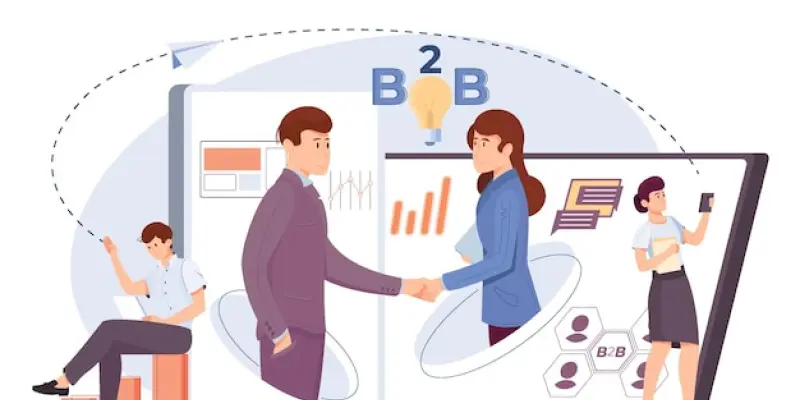In 2025, the landscape of B2B marketing continues to evolve with rapid technological advancements and changing consumer behavior. B2B marketers face a series of challenges, including reaching an increasingly fractured audience and navigating a saturated market environment. To maintain a competitive edge, it becomes crucial for marketers to stay agile, continuously update their skill sets, and implement effective strategies and technologies. To thrive, attention must be paid to updating SEO expectations, diversifying LinkedIn strategies, and adapting content to align with current customer preferences. These elements form the foundation for a successful B2B marketing approach this year.
SEO Updates
Search engine optimization remains a cornerstone of digital marketing, but major shifts in algorithms and search technologies require fresh approaches. Google’s 2023 helpful content update significantly altered SEO practices, realigning them to prioritize content genuinely crafted for users over those designed purely to rank well. Consequently, B2B marketers should consistently monitor changes in search engine results pages (SERPs) and be prepared to adapt their strategies accordingly. This proactive monitoring and adjustment can mitigate the risks associated with relying on single ranking factors, ensuring a more stable flow of organic traffic.
Additionally, the rise of AI-powered search products, such as OpenAI’s SearchGPT and other platforms like Perplexity, introduces new dynamics into the SEO equation. As these technologies become integral to search functions, traditional SEO tactics may become less effective. Thus, marketers must be prepared to update SEO expectations, integrating these new tools and approaches to maintain visibility and competitiveness in search results. Leveraging the unpredictability of SERPs will become a strategic advantage, requiring marketers to diversify their content strategies rather than relying on outdated practices.
Moreover, B2B marketers must consider other relevant factors influencing SEO, such as enhancing web performance, securing backlinks from reputable sources, and optimizing for mobile users. Implementing a comprehensive SEO strategy that encompasses these elements will further solidify a brand’s presence in search engine rankings. Ultimately, staying abreast of SEO updates and adjusting strategies accordingly will prove indispensable for B2B marketers in 2025, ensuring that their content reaches and engages the target audience efficiently.
LinkedIn Strategies
LinkedIn remains the dominant platform for B2B content distribution, with a significant number of marketers utilizing it for this purpose. Despite its widespread use, recent algorithm changes have caused a noticeable decline in reach for many individual profiles, including those of executives. To counter this, B2B marketers must develop a more diversified approach, anchoring their efforts on an executive-led, team-driven content strategy. Regular audits of reach and engagement metrics will help identify what is working and where adjustments need to be made.
This strategic approach involves crafting guidelines for consistent messaging that reflects the company’s goals and values. Training team members in effective content creation and engagement tactics, as well as providing necessary resources, will enhance their ability to maintain consistent visibility on LinkedIn. A coordinated posting schedule that prevents follower saturation while ensuring steady content flow will prove vital. Establishing these practices fosters a more engaging and dynamic presence, helping mitigate the adverse effects of algorithm updates.
Furthermore, exploring various content formats such as video posts, infographics, and long-form articles can aid in capturing the audience’s attention and improving overall engagement. Incorporate relevant industry insights, case studies, and thought leadership pieces to showcase expertise and build credibility. Partnering with influencers and leveraging employee advocacy programs can also expand reach and enhance visibility. By adopting these diversified LinkedIn strategies, B2B marketers can navigate the platform’s evolving landscape and maintain a robust presence.
Adapting to Customer Content Preferences
In 2025, B2B marketing continues its rapid evolution with technological advances and shifting consumer behavior. B2B marketers face numerous challenges, such as connecting with an increasingly segmented audience and maneuvering through a saturated market. To remain competitive, it’s vital for marketers to be agile, continually enhance their skills, and adopt effective strategies and technologies.
Success in B2B marketing this year hinges on several key elements. First, marketers must stay updated on changes in SEO expectations to ensure visibility. Second, diversifying strategies on LinkedIn can help reach a broader audience and engage more effectively. Finally, content must be adapted to resonate with current customer preferences and needs. These foundational elements are essential for a successful B2B marketing plan in 2025, ensuring brands can thrive despite the competitive and constantly changing environment.

